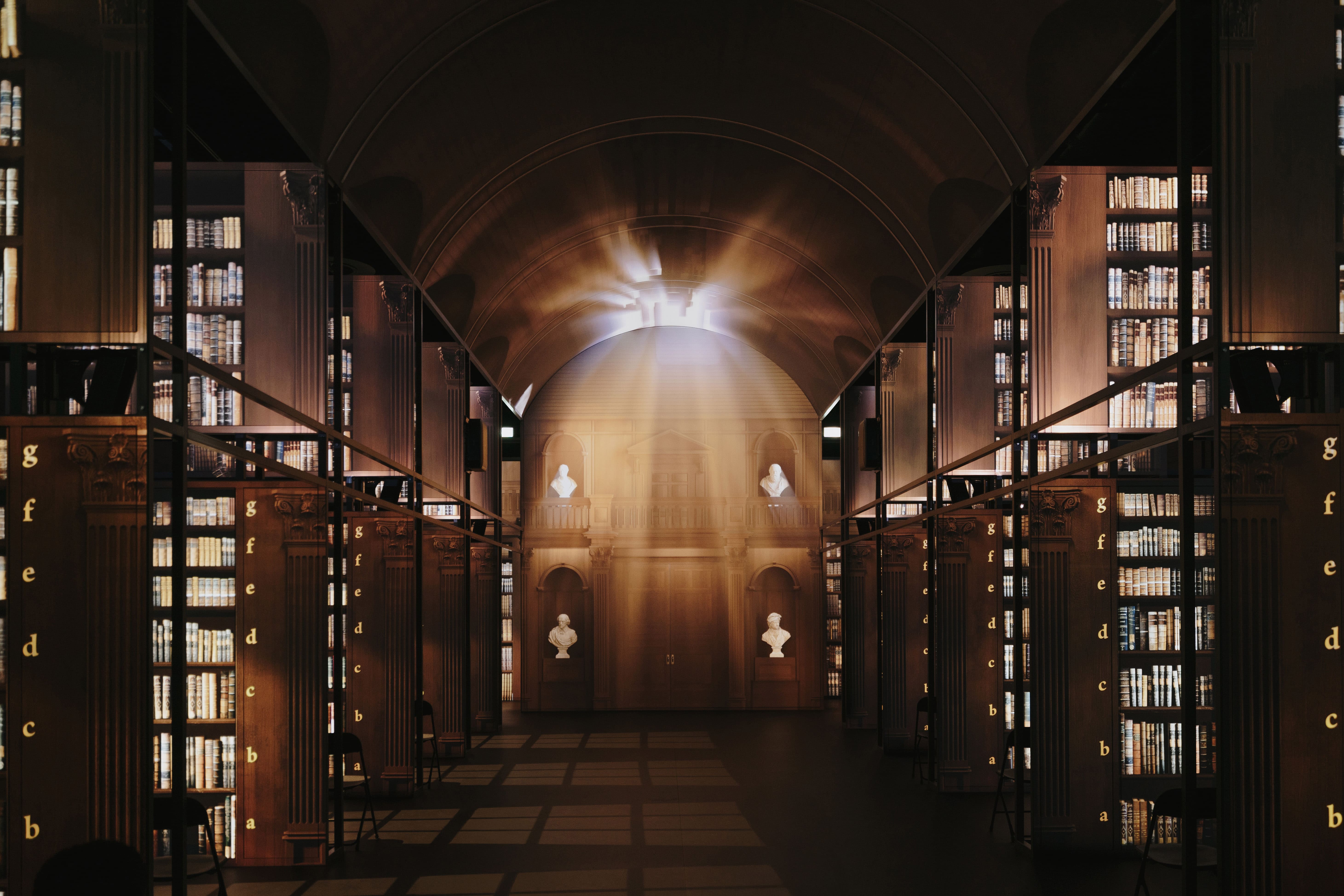Updates
What I talk about when I talk about immersive

We’re all immersed – in content and culture, and by choice. But what makes an immersive experience truly meaningful, rather than just visual noise in a dark room?
At Trinity College Dublin, we helped design something that’s not just immersive; it’s deeply authentic, academically rigorous, and audience-first. Welcome to The Book of Kells Experience.
The challenge - and the opportunity
When Trinity College’s Old Library, home of the world-famous Book of Kells, closed for vital conservation, the team needed more than a stand-in. They needed something bold. Something compelling. Something that wouldn’t just replace the Library experience, but reimagine it for today’s audiences.
Over 12 months and 100,000+ visitors later, The Book of Kells Experience has just been shortlisted for a D&AD Pencil. It blends big ideas and detailed design, bridging centuries of knowledge with cutting-edge immersive storytelling.
From the very first meeting, we asked a core question:
So, what makes an immersive experience work?
Here are some hard-won principles we learned through creating The Book of Kells Experience:
Rule 1: Don’t compete with ‘the real thing’, add to it
You can’t outshine the awe of walking into Trinity’s Long Room - barrel-vaulted, steeped in musky, bookish grandeur. It’s the Sistine Chapel of scholarship.
What you can do is reveal what the eye alone can’t see: how the Library evolved like a living organism, absorbing technologies, expanding its roof, shifting its role as society changed. We visualised that living legacy through immersive storytelling and interactive digital environments that extend, not replicate, the original.

Rule 2: Distinctly digital, authentically Trinity
Authenticity doesn’t just mean “old stuff.”
It means collaboration, community, and care. We spent weeks embedded in the campus, interviewing academics, librarians, students, and archivists. The experience is thematically mission-led. It’s infused with real voices, real passions, and real stories.
Authenticity also meant bringing in experts from across disciplines - history, architecture, curation, music, and even heritage acoustics - to ensure every element was grounded in truth.
Rule 3: The detail is the design
Immersion isn’t projection mapping alone; it’s world-building.
Some examples:
Dialogue between Socrates and Ada Lovelace (yes, really), written by BBC scriptwriters.
Every digital book was hand-scanned, modelled, and curated from Trinity’s real collection.
A soundtrack recorded on the world’s only replica of the 14th-century Brian Boru harp.
Every person seen in the Long Room is a Trinity student or member of staff, recorded on site. The only figure holding a historic object in the digital library? The real-life Librarian, Helen Shenton. Even the movement of sunshine across the books and actual acoustic reverb were captured from inside the Long Room, before opening hours.
This level of storytelling makes the difference between an experience that’s watched and one that’s felt.

The philosophical bit
Immersive experiences, when done well, challenge foundational ideas: What’s material? What’s memory? What is the role of space in storytelling?
At Trinity, we created a literal box of wonders - a portal between centuries. Visitors travel from the present to the 9th century and beyond, glimpsing a possible future. The effect is timeless. The journey is theirs.
So, what’s the takeaway? Not all immersive experiences are created equal
Big-name IP doesn’t guarantee substance or sustainability
Museums, heritage sites, and academic institutions can (and should) harness this power without compromise.
Great storytelling still wins. And audiences know when you’ve put in the work.
Immersion isn’t just spectacle. It’s an invitation. Respect the visitor. Dig deep into the story. And always, always add something they can’t get anywhere else.
Want to learn more?
Explore the behind-the-scenes story here:
Event: Experience the Wonder
Watch the teaser
Images : Museum Studio

Jack Smurthwaite, Senior Content Designer, Museum Studio









